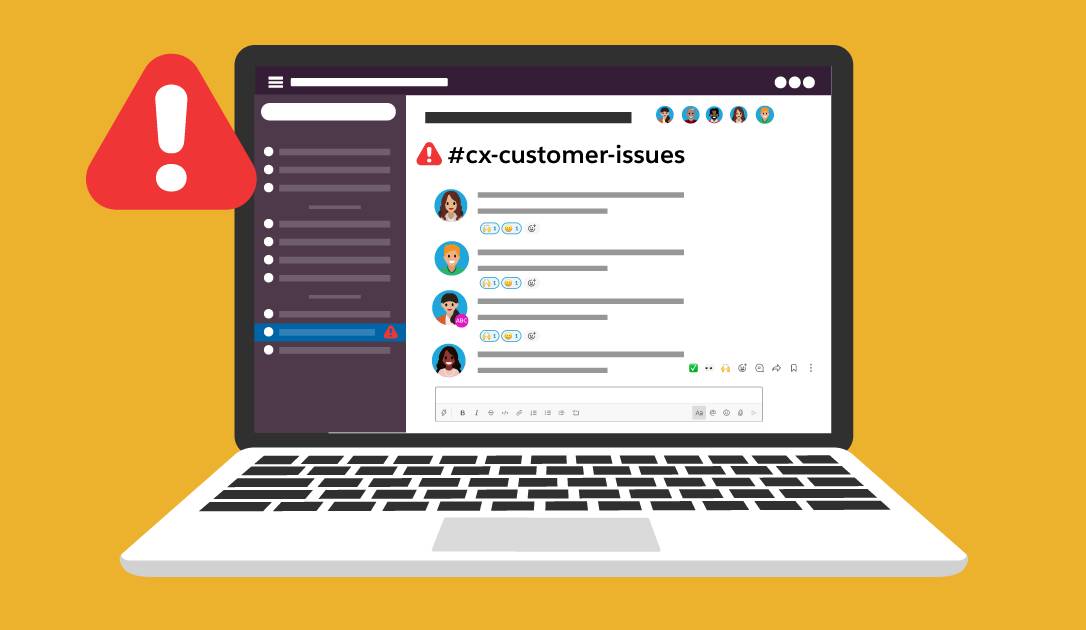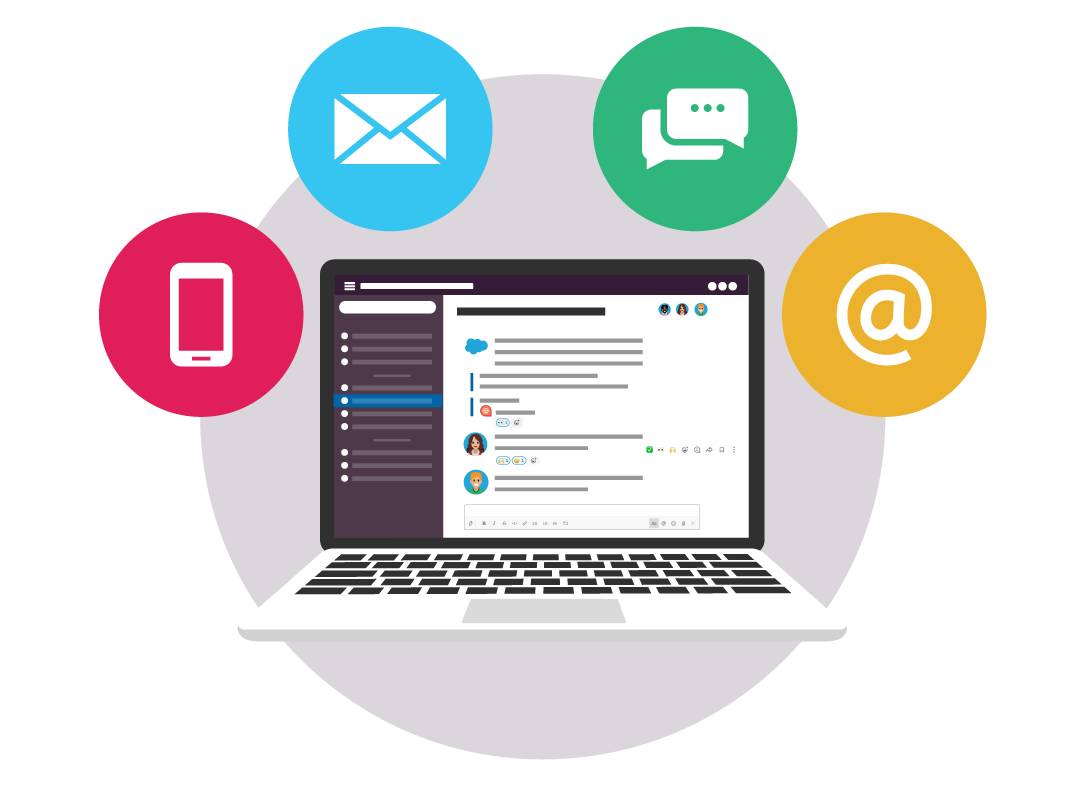Create a Plan to Bring Slack-First Thinking to Your Service Team
Learning Objectives
After completing this unit, you’ll be able to:
- List four things to consider before you roll out Slack to your service team.
- Explain how to use workflow and integration to maximize your use of Slack.
Get Ready to Bring Slack to Your Team
You’ve seen how much potential Slack has to supercharge your customer service organization and your customer experience overall. But before you begin, remember the old adage: Measure twice, cut once. In other words, plan carefully before you make changes if you want those changes to be effective.
So before you roll out Slack to your team, think about these four things.
- Naming conventions. How should you name your channels? How can you organize them so that team members can easily find the right place for the right conversation?
- Workflow. What are your highest-priority workflows? How can you bring these workflows into Slack to trigger key events and approvals?
- Integration. What third-party systems should you integrate with Slack? How can you support your most important workflows with integrated apps and tools?
- Case Swarming. How should case swarming look like? What user behaviors do you want to encourage? How can you train team members to use Slack consistently and efficiently?
We cover each of these in this unit.
Naming Conventions
As you set up your service channels in Slack, think about how you group and organize conversations. A best practice is to develop a set of channel naming conventions and guidelines that you share across your organization.
Here are a few examples.
| Channel Name | Description |
|---|---|
|
#cx-all-support |
|
|
#cx-apac |
|
|
#cx-project-help-bot |
|
|
#cx-customer-feedback |
|
|
#cx-customer-escalations |
|
|
#cx-solar-battery |
|
Consistent names help your team find the right channel, and they help new customer service professionals get up to speed quickly. And a consistent prefix, like #cx for “customer experience,” means your channels will be grouped naturally in a logical flow.
Workflow
Workflows in Slack let you automate routine tasks. Start by identifying areas with high-priority and high-volume workflows. These are good candidates for streamlining. And consider highly manual processes that cost your service professionals (and therefore your customers) valuable time.
For example, your customer service professionals can use Slack to view Salesforce cases and volunteer where they have special knowledge, get nudges on cases that have been open for too long, or get notified when a top severity case has been created. The team ensures that no cases get left behind, and that every customer gets a follow-up.

Another benefit of using Slack workflows to handle support inquiries: Everyone on your customer service team gets visibility to the support process. With this setup, your team increases transparency and engagement, and everyone builds knowledge that helps them to resolve complex issues and specialized inquiries.
But let’s go beyond automation and workflow, and consider the powerful potential Slack has to help your customer service organization delight and wow your customers via integrated apps and tools.
Integration
Your team can streamline service monitoring and alert notifications to your customer service professionals and engineers, all through integrations built right into Slack.
Consider this example for how you can use integration to monitor performance, manage incident response, and alert teams.
- Set up a third-party integration with an online monitoring technology, and configure the necessary rules for the integration to alert in the #cx-customer-issues channel if certain criteria are met.
- A customer issue occurs; customers are unable to log in to the self-service customer support portal. The online monitoring technology detects the outage and posts an alert to the channel, notifying both engineering and the customer service team.
- The on-duty manager gets the alert and investigates the issue. It’s discovered that a recent code change from earlier that day had the unintended consequence of affecting some users’ ability to log in to the portal.
- The on-duty manager alerts the engineering team in the #dev-team channel. They perform a rollback of the code changes from earlier in the day. The on-duty manager keeps the customer service organization updated on the status of the resolution using the #cx-customer-issues channel.
- Once the issue is resolved, the on-duty manager posts an update in the #cx-customer-issues channel, closing the issue and providing root cause analysis (RCA).

And if you collaborate regularly with partners to resolve issues, it's a good idea to integrate with your partners using Slack Connect.
Integrating your existing tools and apps with Slack helps you maximize their value.
Case Swarming
Channels, workflows, and integrations are key tools for Slack-first service. But tools are only as effective as the people who use them. This is why it's important to ensure service agents can do what they do best, collaborate together to solve complex customer issues.
There are several things you can set up in Slack that facilitate case swarming.
- Use restricted posting permissions in channels service channels so issues are always posted, and the swarming happens as replies in the post's thread.
- Create user groups so multiple users or teams can be alerted of a new ticket or escalation.
- Use System for Cross-Domain Identity Management (SCIM) and other identity settings so agents are added to the right channels from day one.
- Use Slack's search and search modifiers so agents and leaders can find the information they need, when they need it.
If you're interested in diving deeper into how users should use Slack, check out the Slack Etiquette and Productivity module.
Want to Learn More?
If you’re ready to take your Slack-first service skills to the next level, check out Slack for Customer Service. There you’ll find more tips and resources for building customer loyalty and making your customers even happier.